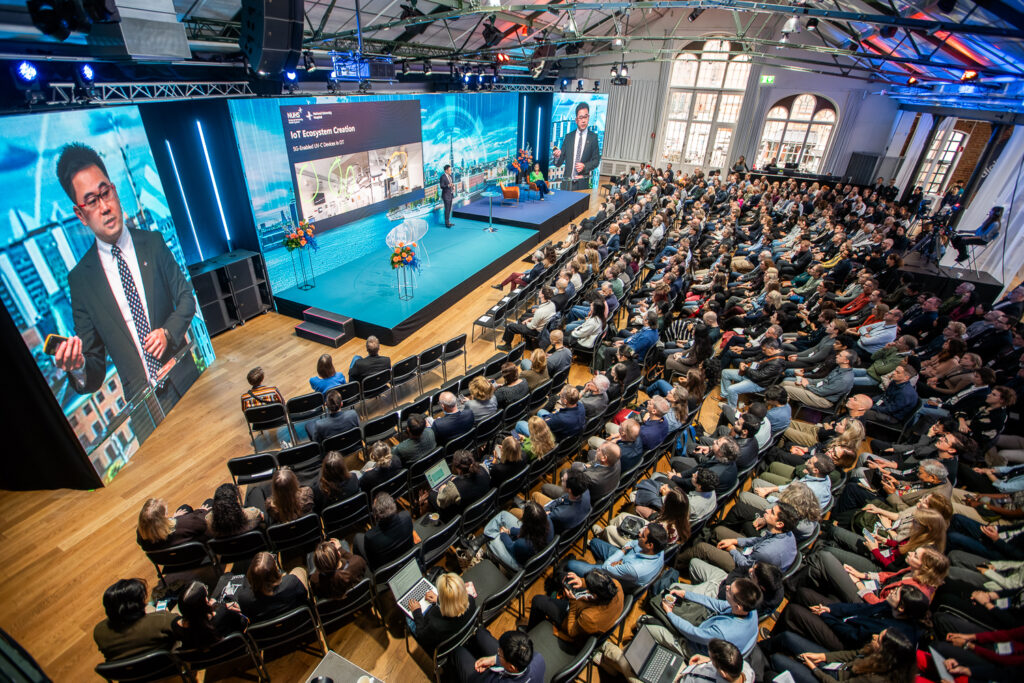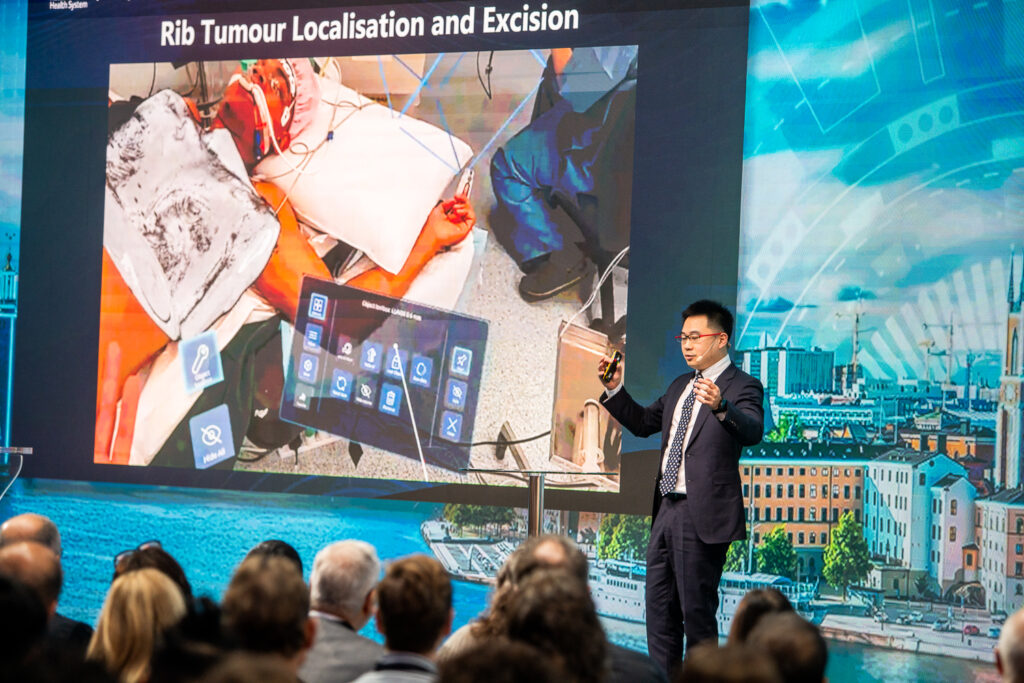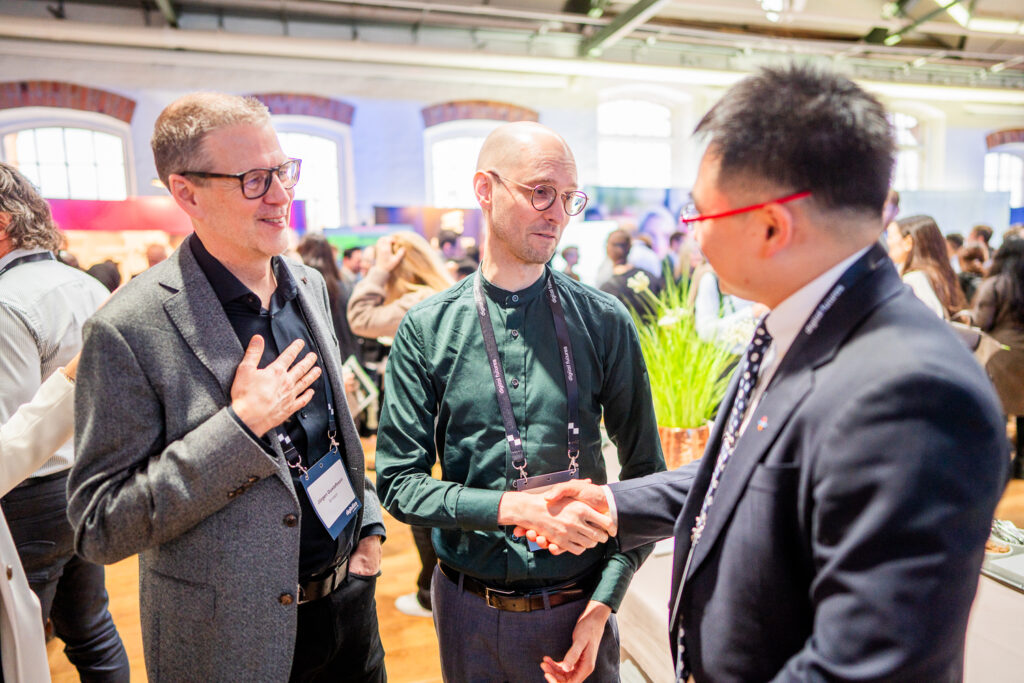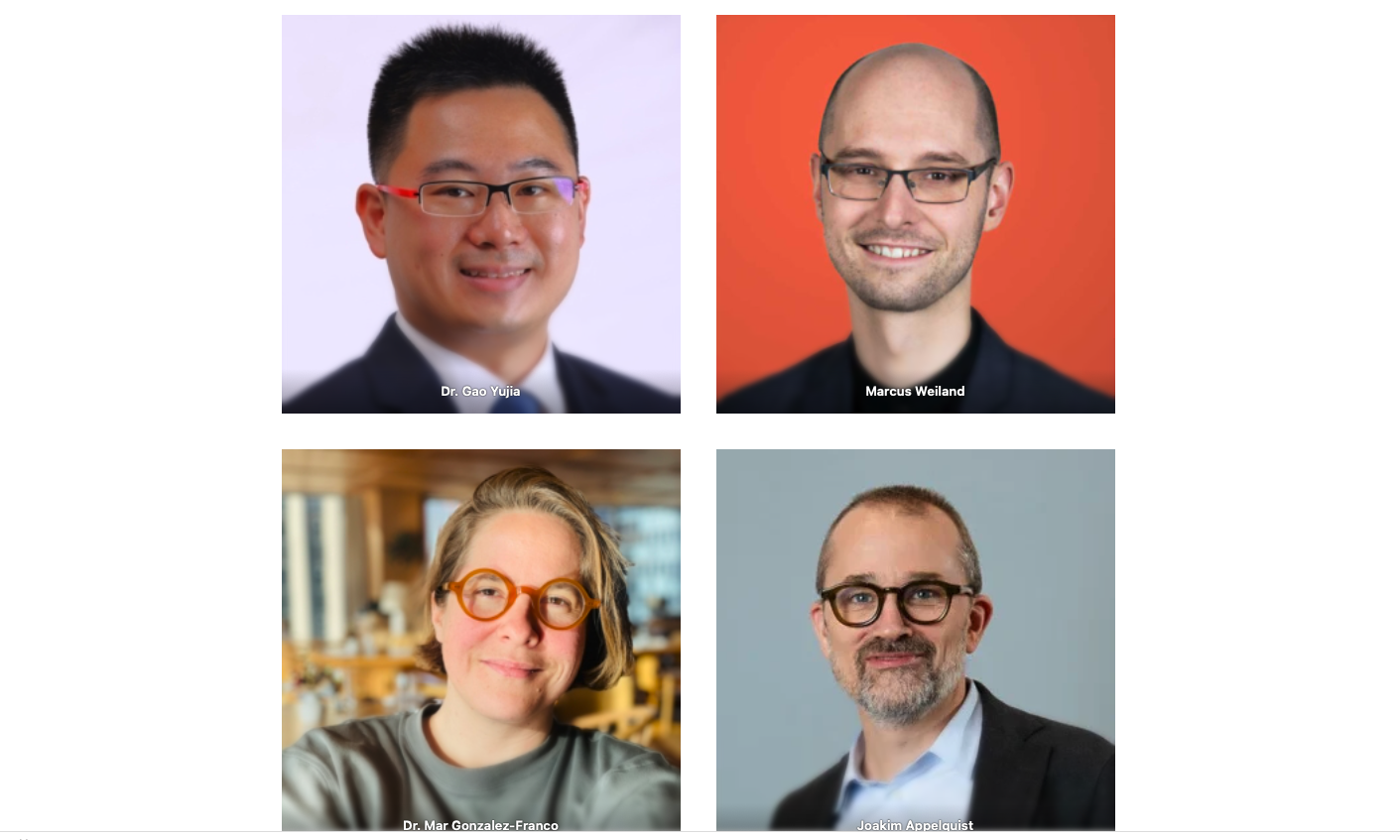Autonomous AI was the focus of this year’s Digitalize in Stockholm, with talks and discussions about the challenges and opportunities presented by the new technology. Dr. Gao Yujia from Singapore explained how hospitals are becoming intelligent by connecting via software-defined networks such as 5G and 6G.
Digitalize in Stockholm is Sweden’s largest event on the challenges and opportunities facing society as it undergoes digital transformation. This year, more than 700 researchers, experts, and business leaders from around the world gathered at Münchenbryggeriet on Tuesday, November 11.
Link to the recorded presentation “Advanced Connectivity in Healthcare – Leveraging Wireless Networks and AI“ on Youtube: https://youtu.be/jTRJmOVQeoM?si=onmfLq0tM34mzstf

Keynote speaker Dr. Gao Yujia shows films of a liver transplant on a nine-month-old girl for whom the mother was the donor. With the help of the hologram, the surgeon can see a digital representation of the liver tissue to be transplanted during the operation and how much needs to be cut away to fit the small body. Dr. Gao Yujia says that this was three years ago and that the child is now doing well and attending preschool.
“I am a practicing surgeon in the field of pancreas and liver transplants. What I am talking about here today is my side job as assistant chief technology officer at the National University Health System, NUHS. What I want to convey is a different picture of 5G and what it means for healthcare,” says Dr. Gao.

He points out that healthcare is undergoing its fourth revolution, just like other industries. This encompasses everything from medical imaging to predictive patient monitoring and surgical robotics. AI has also made inroads in administration and education. At the heart of all this is the question of how it is possible to connect all healthcare in a digital ecosystem to turn the hospital itself into an intelligent entity.
“For me, it started when I was standing at the operating table and wished I had a hologram of the patient’s MRI. A few years later, we had started using Microsoft HoloLens in the planning of liver transplants. The next step was to incorporate it into the surgery itself. That’s when we discovered the challenges; we had Wi-Fi, which proved to be hopeless,” continues Dr. Gao.
He explains that their existing network could be disrupted by people watching Netflix and was too unstable. However, a financial grant provided the opportunity to install a private 5G network in collaboration with Swedish company Ericsson. With a software-defined network (SDN) as the foundation, it becomes possible to both break down silos in the organization and introduce completely new technology in healthcare.

“It is important for us to work together with industry. We don’t manufacture things, but we can create use cases with companies and see what the next generation of technology will be in different areas. Today, technology is not the problem, but getting a 5G network into a 40-year-old hospital proved to be more difficult. No one had an accurate blueprint of the hospital,” explains Dr. Gao.
Someone in the audience asked if he saw any area of healthcare that AI and digitalization couldn’t solve.
“Patient contact, like delivering bad news. We don’t want a robot doing that to us. In those crucial moments—a warm hand or a hug—we still want people there.”


In Stockholm, Dr. Gao Yujia is participating in an exchange of experiences between the National University Health System and the region on the use of 5G in hospital operations. Here, too, the focus is on harnessing the potential of digitalization to achieve greater patient benefit through new technological applications. Karl H. Johansson is a researcher and director of Digital Futures, which organizes Digitalize in Stockholm:
“The European Commission’s latest survey shows that Stockholm tops the list of 241 regions, ahead of Copenhagen, London, and Zurich. One important reason for this is that we have succeeded where many other regions are still struggling, namely in innovation through collaboration between researchers, businesses, and the public sector, known as the triple helix model. This is absolutely essential for the development of tomorrow’s smart hospitals.”
Text: Johanna Gavefalk – based on interview with Dr. Gao by Håkan Sandberg
Photo: Magnus Glans





